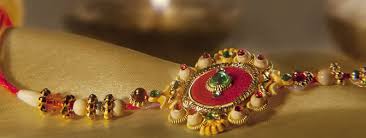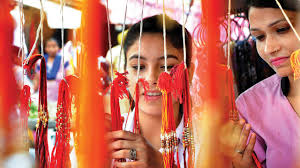Rakshya means "to protect" and bandhan is "tie" or "bond". Rakshya Bandhan is a bond or tie of protection. This thread is which is tied around the hand is called Doro. Some people even say Janai for Doro.

They believe doro brings them good luck, when one believes, that always becomes true. People keep the doro tied in wrist till on Laxmi Puja day in Deepawali. This thread is then taken out from wrist and tied on the tail of a cow in the cow worship day (Laxmi puja) in about October. In Raksha Bandhan day male, female, children and kids regardless of status and caste get tied a doro (sacred colorful thread) around their wrist. Generally males get tied the thread around their right and the women around their left wrist.
Hindu believe that they have to cross a river Baitarni after death to reach heaven. The cow will help him/her to cross the river Baitarni, by allowing the dead to cling to her tail, if he/she ties the doro to the tail of a cow on Laxmi Puja day. 
